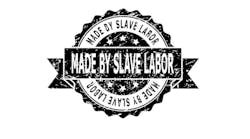In an effort to increase the efforts to eliminate child and forced labor globally, the DOL released a report on Sept. 28 that details the scope and potential sources of the problems.
The department’s Bureau of International Labor Affairs has published the 10th edition of its List of Goods Produced by Child Labor or Forced Labor and the 21st edition of the Findings on the Worst Forms of Child Labor.
These reports identify industries in which these concerns persist in foreign nations and also describe progress made by some countries to uphold their international commitments to eliminate these practices.
“The Bureau of International Labor Affairs’ updated reports provide a blueprint for those determined to eliminate child labor and forced labor worldwide,” said U.S. Secretary of Labor Marty Walsh, in a statement. “They also serve as useful guides to know where these problems persist, and how the global community can act to end reprehensible practices that have no place in a 21st-century world economy.”
The International Labor Organization estimates that millions of people worldwide are working in abusive labor conditions, among them 160 million child laborers and 27.6 million forced laborers. The new ILAB reports help detail where and in which industries these abuses exist, assist foreign governments with effective policy responses, and support businesses’ due diligence and risk management systems.
The latest List of Goods Produced by Child Labor or Forced Labor report includes 158 goods from 77 countries that the department has reason to believe are produced by child labor or forced labor in violation of international standards. The 10th edition adds 32 goods to the list, including two new ones, dairy products and açaí berries. At the same time, the report no longer includes cotton produced by forced labor in Uzbekistan.
The report also includes three in-depth, supply-chain studies on lithium-ion batteries, palm oil and solar panels. ILAB drew on a broad body of evidence to trace, for the first time, goods tainted with forced or child labor as they move through complex global supply chains and which final and intermediate products contain them to produce these studies.
The department’s second update, Findings on the Worst Forms of Child Labor, reviews 131 countries and territories’ child labor situations, including trafficking, debt bondage, forced labor, hazardous work, commercial sexual exploitation and the use of children in armed conflict or illicit activities. The report details how these countries’ governments are working to eliminate child labor. It also provides nearly 2,200 country-specific recommendations for eliminating child labor.
Apps, Portal, Tool to Adress Issue
The bureau has updated apps that provide those engaged in bringing an end to child and forced labor with quick access to information on handheld devices. The Comply Chain app, available for download on iOS and Android platforms, provides companies detailed guidance on how to develop social compliance systems in their global supply chains and prevent labor abuses in the goods the companies produce.
The Sweat & Toil app contains information on goods produced by child labor or forced labor, and the latest on governments’ efforts to address child labor. New in 2022 are data visualizations that help users identify regional trends in eliminating child labor, view goods produced with exploitative labor by region and industry, and analyze the use of child labor by industry and country.
The bureau has launched the ILAB Knowledge Portal for researchers, civil society organizations, other governments and international organizations seeking to implement best practices in combating child labor and forced labor. Users can access and search publicly available, grant-supported resources and evaluation reports to bolster their efforts. The portal’s launch responds to a department pledge in support of the International Year for the Elimination of Child Labor.
ILAB has also updated its Better Trade Tool , an online compliance and accountability resource that overlays the List of Goods Produced by Child Labor or Forced Labor with international trade data. The tool highlights U.S. imports at higher risk of being produced using child or forced labor. In 2022, the tool features improved functionality and includes 2021 U.S. import data, U.S. trade preference program details and integrated global trade data.
